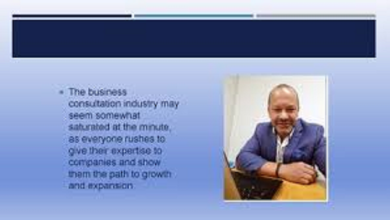6 TIPS FOR MANAGING HYBRID WORK SETUPS

The pandemic has forced many businesses to rethink how to do business and how to operate it successfully in the long run, over the past year or so.
Working from home and communicating via the Internet has become the new normal. However, some businesses wanted a better balance between traditional and remote office setups, so the hybrid work model was created.
Many organizations in this post-pandemic environment, especially those that may require some time to return to their pre-pandemic systems, will benefit from hybrid work setups. Not only is it a way for business owners to ensure the survival of their company, but it also has the potential to improve their operations if done properly.
That said, if you are thinking about implementing a hybrid work setup for your company, here are some helpful pointers.
1. Make a Detailed Plan
When switching to a hybrid work environment, it is important to well prepare. This can be difficult, especially if you are not sure what procedures and policies to implement. On the other hand, the planning process doesn’t have to be difficult. Focus on the most important aspects.
It is important to understand the different hybrid work practices and clearly define the responsibilities of hybrid workers. This will enable you to determine which practices are best suited for the work your employees are doing. You should also make sure you have the right equipment and infrastructure so that everyone can work effectively from wherever they are.
You’ll need the right resources and technologies to enable your teams to collaborate seamlessly in a hybrid work environment. You may need solutions to help with task management, cloud-based storage, project management, communications, and other aspects of your workforce’s environment, whether at home or work. In that case, you may want to work with an IT Consultant in New York such as RisingMax or another reputable firm, as they can provide IT solutions tailored to your specific needs.
2. Be Specific When Implementing Procedures And Policies
Before you finalise your company’s hybrid work setup, inform your employees about the work model you want to use and the procedures and policies that come with it. If you have conducted an in-depth survey of your company as part of your plan, you may have come up with a working model that most of your employees will accept, making the transition easier for them as well.
Remember to define who qualifies for a hybrid work arrangement, how they can request to be part of it, and how the model fits into your current business practices. Make sure your employees understand what’s involved in a hybrid setup, and don’t leave any of your questions unanswered.
3. List Milestones or Deadlines
Instead of counting work hours, track your team’s progress using milestones and deadlines. When remote working first became popular among IT firms, it appeared to be a failure because the productivity of employees was measured by the number of hours they worked. He looked lethargic for not putting in the required hours.
However, it should be noted that most employees do not work the full eight hours in the office. According to a VoucherCloud study, the average office worker is only productive for about three hours a day. Because time is not a reliable indicator of productivity, milestones and deadlines are a better option. If you are working from home for your employees, you will not be able to keep track of their hours, but you will be able to track their progress.
4. Encourage Open Dialogue
When you implement a hybrid setup, it may be difficult to determine who will be at the office and who will be at home when a team huddle is called. You could send out an email to remind people about important meetings, but some people may turn off their work notifications once they leave their shift.
It would be beneficial to promote open communication. An asynchronous approach, in particular, would be advantageous. Because your employees will no longer work the same hours every day, communication lines should keep open and updates should be documented on a regular basis. Remind your employees to communicate their availability to their coworkers via a variety of channels, just to be safe. This ensures that everyone, regardless of when they clock in, is up to date on what’s going on in the company.
5. Increase Your Credibility
Micromanaging employees can be impossible in a hybrid work model. Managers should focus on providing their employees with the resources they need to be successful, not on doubting their ability to self-govern. In this way, the trust they place in their employees can motivate them, resulting in better work operations.
6. Give Consistent Feedback
Because the hybrid approach is essentially experimental, some of your employees may fall behind without even recognizing it. If a team member is confused or lacks information, he or she should know where to turn for help.
A viable solution to this is to provide consistent feedback. Remember that your goal is not to criticize; Instead, you want to help employees improve their performance, by eliminating specific errors they are not aware of. Being adaptable is important. Because these are stressful times, leaders must do to listen and make adjustments as needed if employees are stressed or upset.
Take Away
Hybrid work environments are a great way to combine office and remote work, especially now that the world is still recovering from the pandemic. It’s not a difficult process if you want to put it in place. With the advice above, you can establish a hybrid work model that benefits you and your employees. For better understanding and information, you can also consider contacting Houston’s best software development company Houston. An expert will help you make your workplace healthier, happier, and more productive than ever before.






